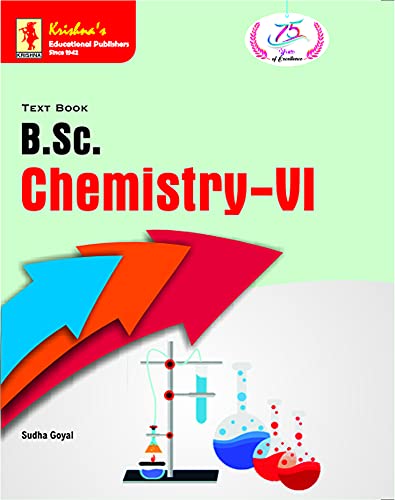
English | 2021 | ASIN: B095P67MRF | 362 pages | PDF | 6.40 MB
SYLLABUS- B.SC. CHEMISTRY VI, INORGANIC CHEMISTRY-VI
B.Sc. VI Semester; I Paper
1. Hard and Soft Acid-Base Theory: Classification of acids and bases as hard and soft. Pearson's hard and soft
acid base concept, acid base strength and hardness and softness. Symbiosis, theoretical basis of hardness and
softness, electronegativity and hardness and softness.
2 general methods of preparation of organometallic
compounds and a brief account of metal-ethylenic complexes. Applications of organometallic compounds-
Ziegler-Natta catalyst, Wilkinson catalyst (No mechanism).
3. Bioinorganic Chemistry: Role of metal ions in biology, essential and trace elements in biological systems,
toxic elements, elementary idea of structure and oxygen binding mechanism in metallo-porphyrins with special
reference to haemoglobin and myoglobin. Alkali and alkaline earth metal ions in biological system-mechanism
of transport across cell membrane, biochemistry of magnesium and calcium
4 Inorganic Polymers of Silicon and Phosphorus : Silicones; siloxanes, silicone rubber, polymethyl
hydrosiloxanes, applications. Phosphazenes, nature of bonding in triphosphazenes. Zeolites.
Some Industrially Important Inorganic Materials: Cement-Manufacture, composition and setting.
Glass- Manufacture, annealing, types and uses.
Ceramics-Definition, traditional and new ceramics, structure of ceramics. Inorganic fertilizers-essential nutrients
for plants- nitrogenous, phosphatic and potash fertilizers.
ORGANIC CHEMISTRY-VI
B.Sc. VI Semester; II Paper Nomenclature of peptides and proteins. Classification of proteins. Peptide structure determination, end
group analysis, selective hydrolysis of peptides. Classical peptide synthesis, solid-phase peptide synthesis.
Levels of protein structure. Protein denaturation/renaturation. Nucleic acids: introduction, constituents of
nucleic acids. Ribonucleosides and ribonucleotides. The double helical structure of DNA.
2. Fats, Oils and Detergents : Natural fats and common fatty acids, glycerides, hydrogenation of unsaturated
oils. Saponification value, iodine value and acid value. Soaps, synthetic detergents, alkyl and aryl sulp-
honates.
processes. Laws of photochemistry; Grothuss-Drapper law, Lambert's law, Lambert-Beer's law, St
3. Solutions and Colligative Properties: Ideal and non-ideal solutions, methods of expressing concentrations
of solutions, activity and activity coefficient. Dilute solutions, colligative properties, Raoult's law, relative
lowering of vapour pressure, molecular mass determination. Osmosis, law of osmotic pressure and its
measurement, determination of molecular mass from osmotic pressure. Elevation of boiling point and
depression in freezing point. Experimental methods for determining various colligative properties. Abnormal
molar mass, degree of dissociation and association of solutes.
4. Thermodynamics III : Statement and concept of residual entropy, third law of thermodynamics,
unattainability of absolute zero, Nernst heat theorem. Evaluation of absolute entropy from heat capacity data.
download скачать
https://nitroflare.com/view/3EFC9A37519969D/lw80o.Krishnas..B.Sc..Chemistry.VI.Edition1.pdf
https://rapidgator.net/file/6f56599810e0496f90d8ab436e2690ec/lw80o.Krishnas..B.Sc..Chemistry.VI.Edition1.pdf

